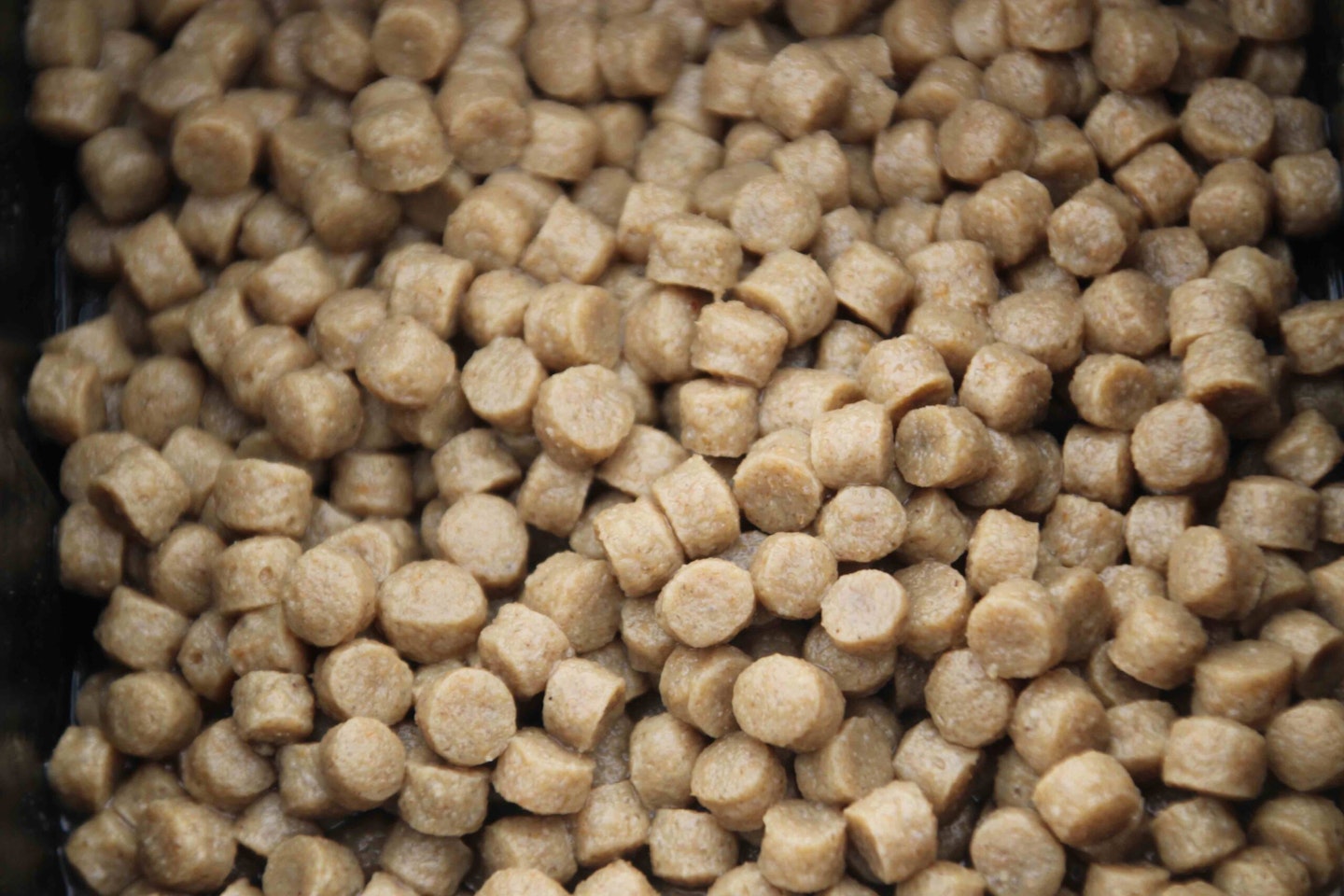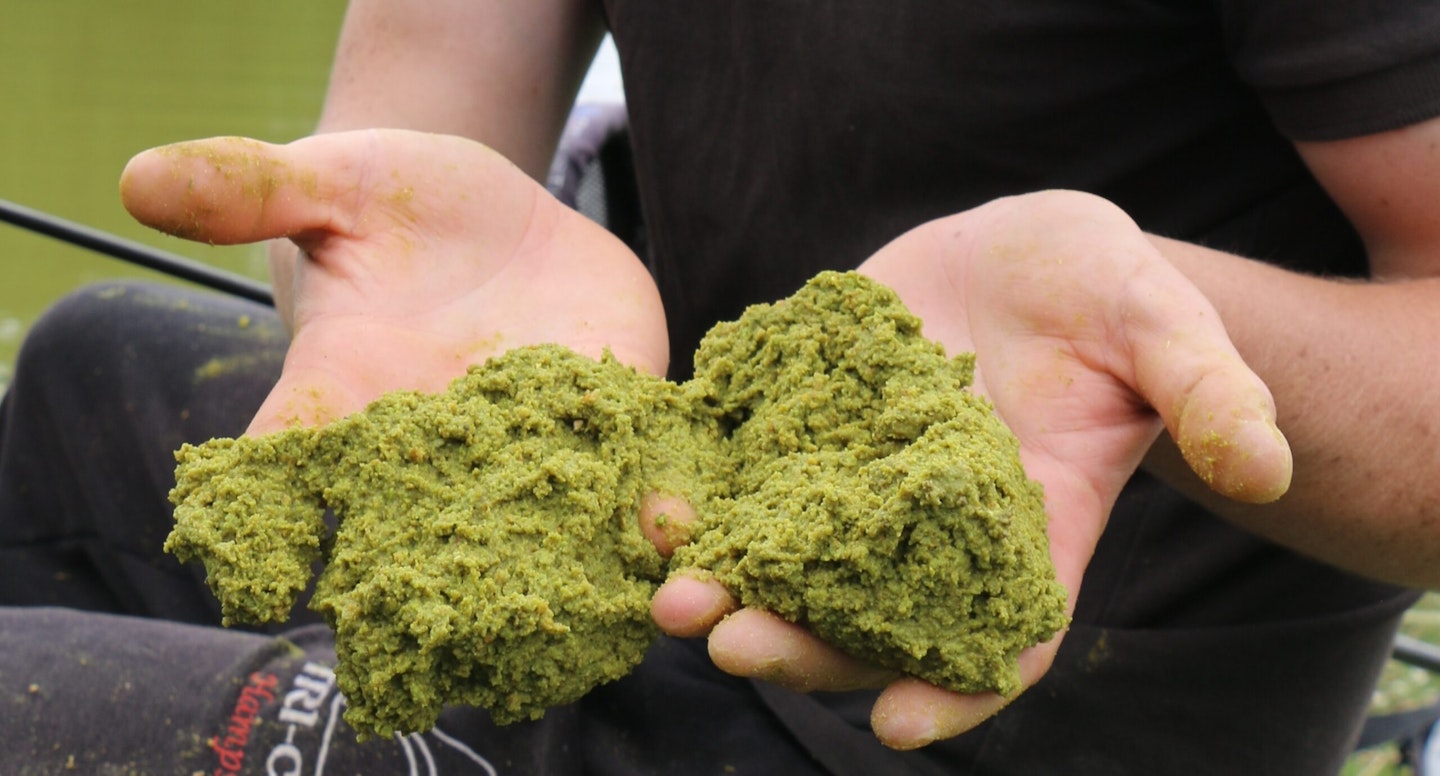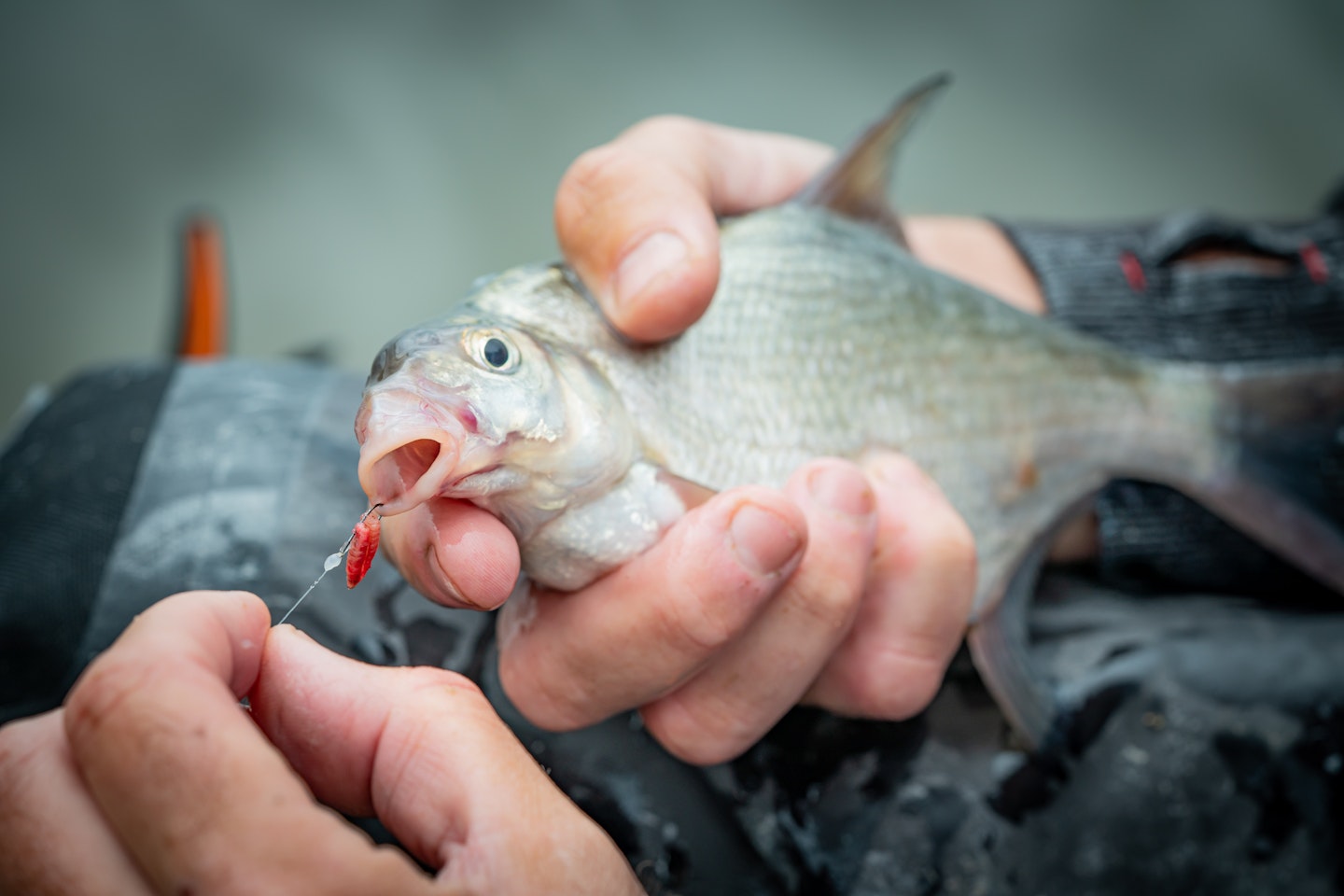A swim erupting with bubbles is a very common issue on commercials, especially those older ones which are well established.
It used to be thought that fizzing was caused by carp feeding off bottom, but the lack of line bites when this happens disproves that theory. Instead, I believe it’s the result of fishing on very soft silt, as the carp or other fish are ripping the bottom up, looking for whatever bait you are feeding.
This then colours the bottom layer of the water up even more, to the point where they can’t find your hookbait.
MAKE SURE YOU CHECK OUT THE BEST FISHING POLES IN OUR BUYER'S GUIDE.

Searching your swim
It’s important to search your swim thoroughly with a plummet when fishing a silty commercial lake. You’re trying to find a spot with a firm bottom to prevent fizzing from occurring. A heavy plummet is useful for working out what you are fishing on, and I like a 30g Guru version. I can tell if it is a hard or a soft bottom, based on whether it plugs in when it hits the deck.
If you are unsure at the first attempt, try lifting it 18ins off the bottom and dropping it straight down. If, when you go to lift it out, it moves freely, you’ve found a hard area. If it sticks, you’re on soft silt.
On some venues it can be impossible to find a hard area in open water. It is then worth looking at the slopes. I don’t normally like fishing on a slope, but on silty venues it can be a great choice, as silt doesn’t tend to build on it. If the slope isn’t too steep, this can be a great area to target.
IT ALWAYS PAYS TO SIT ON ONE OF THE BEST FISHING SEATBOXES TO STAY COMFORTABLE DURING YOUR SESSION.

Bait selection
Heavy baits that can sink into the silt should be avoided, so hard pellets and hemp are best left in your bag. They’ll encourage fish to dig into the silt, making the situation worse. How much bait you feed also needs to be considered.
Introduce too much and you’ll increase competition, creating more fizzing and more problems. The aim should be to feed just enough to draw a fish in, catch it and then reset the trap with another small amount the next time you go in.
Groundbait should also be avoided, as it seems to send the fish into overdrive, where they rip the bottom up aggressively.
I often rely on 4mm or 6mm expander pellets as loosefeed, because they are light enough to sit on top of any silt. This therefore minimises the amount of disturbance caused to the substrate.
USING ONE OF THE BEST FISHING CATAPULTS CAN HELP YOU SPREAD THE FEED OUT TO PREVENT FISH DIGGING IN SILT.

Stand-out hookbaits
Another potential solution is to use a big target bait that the fish can find when the water at the bottom is highly coloured. Paste or a big piece of meat are often ideal.
Meat dyed red can be highly effective, because it is a very visible colour that will stand out. In short, something that is packed with scent, and that will be the first thing that any fish will see, should come into the equation when you’re choosing hookbaits.
STRUGGLE FISHING WITH PASTE? READ THIS ARTICLE TO GET THE MOST OUT OF THIS FANTASTIC BAIT.

Starting new lines
You’ll often find that you catch a few fish over a silty spot before the problems start to occur. Ditching that area and putting the plummet back on to find another spot with a similar depth is often the key to keeping the bites coming.
It’ll be a case of catching a few carp from a target zone before moving on. Your next spot may only be a few feet from your last one, but that will often be enough to get you back on track for a while.
IF YOU WANT MORE ADVICE ABOUT POLE RIGS, CHECK OUT THIS GUIDE FROM NICK SPEED.

Leave plenty of bristle showing
Fish charging around your swim are likely to lead to line bites. Leaving plenty of bristle on show will give you peace of mind when trying to work out what is and isn’t a genuine bite. You should only strike when the float tip flies under – ignore little dips.

Swim full of silvers
Lots of fizzing will leave you thinking that you have a swim full of carp, but this isn’t always the case. Small skimmers are often the cause of it and, if you are using large or hard hookbaits, you’ll never get a bite. Try a single maggot briefly and, if you catch a small silver, you can put the fizzing down to their presence.

